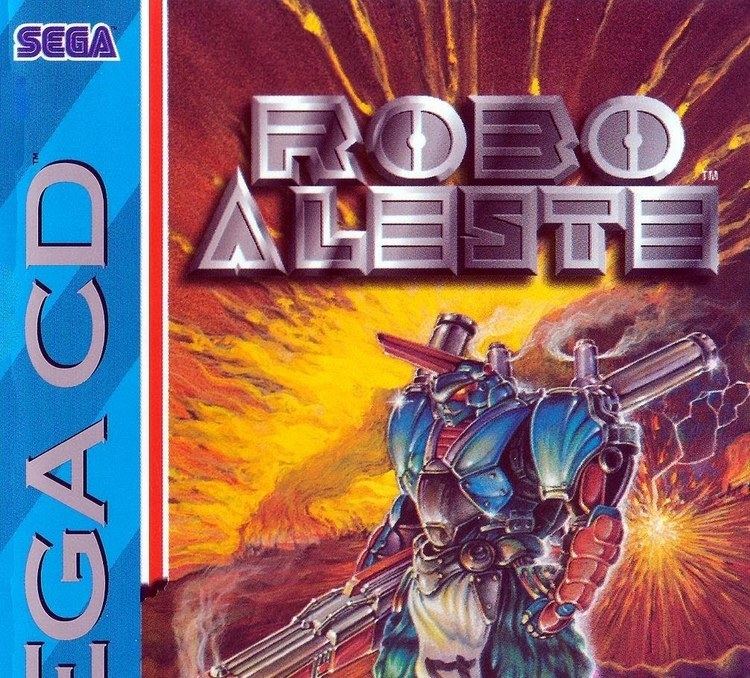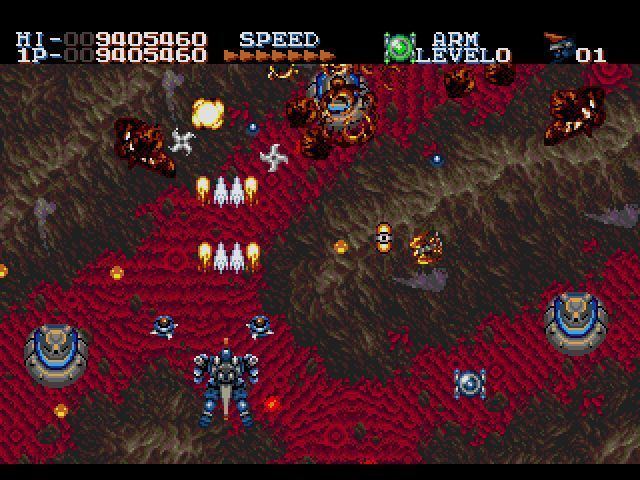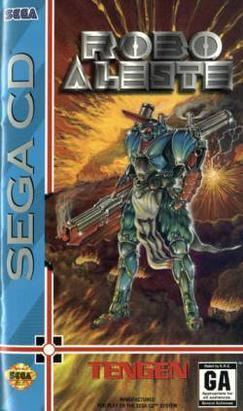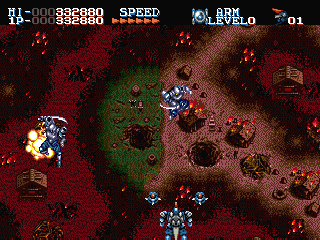9.4 /10 1 Votes
4.6/5 eBay Designer(s) Takayuki Watanabe Mode Single-player video game | 4.8/5 Emuparadise Producer(s) Masamitsu Niitani Initial release date 27 November 1992 Genre Shoot 'em up | |||||||||||||||||||||||||||||||||
 | ||||||||||||||||||||||||||||||||||
Distributor(s) Tengen (North America)Sega (Europe) Composer(s) Katsumi TanakaSatoshi Shimazaki Similar Compile games, Shoot 'em up games | ||||||||||||||||||||||||||||||||||
Classic game room hd robo aleste for sega cd review
Robo Aleste, released in Japan as Dennin Aleste (電忍アレスタ), is a 1992 vertically scrolling shooter video game developed and published by Compile for the Sega CD. Tengen and Sega released the English version of the game overseas in 1993. It is the last game in the Aleste series, and is a followup to M.U.S.H.A. for the Sega Genesis.
Contents
- Classic game room hd robo aleste for sega cd review
- Classic game room live robo aleste stream gameplay
- Gameplay
- Plot
- Reception
- References

Classic game room live robo aleste stream gameplay
Gameplay

Robo Aleste follows the traditional vertically scrolling shooter style, with the player flying forward and enemies coming from the front, sides, and rear. At the end of each level is a boss, which the player must defeat in order to move on. Each boss is one of the enemy warlords. Like most scrolling shooters, there are several weapons which can be collected and powered up.

The main kunai shot and the three subweapons from Musha Aleste return, joined by new power levels for the main shot and a new subweapon. The sideship system has been completely redesigned: you now have two indestructible units with you at all times, which also fire your subweapons themselves. The ability to give the sideships commands has been replaced with a new subweapon that hits in many different directions. Additionally, the sideships can be launched at enemies.

The Aleste initially starts out with nothing but the main shot and these sideships, and will return to this state whenever the player loses a life. To powerup the main weapon, the player must collect small power chips dropped from a certain type of friendly ship. As more chips are collected, the number of knives in a shot increases (up to four), and eventually the Aleste can start throwing stronger fireballs instead.
The other weapons are subweapons that each have a particular ability and function separately from the main weapon; only one subweapon can be equipped at a time. To collect, switch between, and powerup subweapons, the player must collect one of four colored spheres dropped by another type of friendly ship. Each subweapon has four levels of power, growing stronger and more destructive with each increase in level, obtained by collecting the same subweapon again and again. The four subweapons are as follows:

Plot
The plot of the game refers to the Sengoku era feudal Japan being given giant mecha. The player takes control of one such mecha, the Aleste, piloted by a man named Kage, as he fights other feudal lords.
Kage (Shadow) is the sole surviving member of Oda "Demon King" Nobunaga's robot ninja army, the White Fang. The Aleste is an 8-metre tall mechanized steam-powered mech. At the start of the game, Nobunaga's home is razed to the ground by Tetsu, who is a frequent end-of-level boss throughout the game and the older brother of Kage. Nobunaga survives and Kage defeats Tetsu and resumes his mission to bring down the anti-Oda alliance.
Tetsu is humiliated and refuses to believe that he was defeated by his younger brother Kage through skill alone, so he builds himself a gigantic mecha to match the power of the Aleste. He then tests the machine's firepower on a defenseless village, killing all of the innocent villagers caught in the onslaught. Kage eventually learns of this and fights Tetsu in a battle to the death. The Aleste, in the end, wins and Tetsu dies.
Kage continues his mission and after defeating all of the opposing warlords he comes face to face with Astaros, the leader of the anti-Oda alliance. After defeating Astaros, Kage learns that she has come from another dimension which was supposedly destroyed by Nobunaga, who she believes to be the resurrected figure of Lucifer. Nobunaga plans to take over the world and Kage eventually uses the Aleste to stop him once and for all which is depicted in the game's ending sequence.
Reception
Retro Gamer included Robo Aleste on their list of top ten games for the Mega CD, commenting that "the music and cut-scenes genuinely elevate the game to a new level of greatness." Hardcore Gaming 101 opined "the CD medium doesn't add much to the game other than some OK music and some nice scaling effects here and there. Still good, but MUSHA and Spriggan are better."
